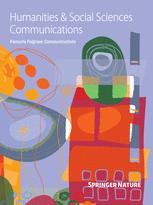With reducing forests in the west and central Africa sub-region (Faure, 1989; Ntep, 1999), governments and non-governmental organisations (NGOs) are putting increasing emphasis on permanent forest conservation and management. As a result, throughout the past one and a half decades, there has been an increasing designation of protected areas in Cameroon and Nigeria (EarthTrends, 2001). Some of these protected areas like the Korup National Park (KNP), Cameroon, either have people living inside them or very close to the periphery (Vabi, 1999). Thus, in order to effectively manage the park, the involvement of the local communities in the process is not only considered a modern approach but is seen as indispensable (Barzetti, 1993). One way of assessing the potential to be played by a specific group of communities is by evaluating the extent to which their livelihood strategies are intertwined with the resources in the protected area.Secondly, with reduced access to permanent forests, livelihood needs at local levels are consequently being derived from semi-managed forest stocks, preferably in the ever-increasing soft edges of permanent forests, loosely referred to as secondary forests (Budowski, 1961, 1970; Gómez-Pompa and Vásques, 1974) and depending on the extent of human-induced management, as agroforests. It is increasingly in these agroforests that resource-poor farmers are being assisted by NGOs (non-governmental organisations), in programmes aimed at the diversification of food and income options such as in the domestication of indigenous fruit and medicinal trees (Leakey and Simons, 1998; Leakey and Tchoundjeu, 2001). Despite existing opportunities for the cultivation and marketing of indigenous trees (Ndoye et al., 1997), existing low levels of tree planting by farmers in the region (Degrande et al., in prep.) is being partly justified by farmers in terms of limited available land livelihood needs.To appraise this situation in a participatory manner, options for tree integration into existing land use systems need to be evaluated in a way that empowers the farmer regarding the true, not imagined, possibilities or limitations of his or her land.
DOI:
https://doi.org/10.1002/j.1681-4835.2003.tb00093.x
Altmetric score:
Dimensions Citation Count:























